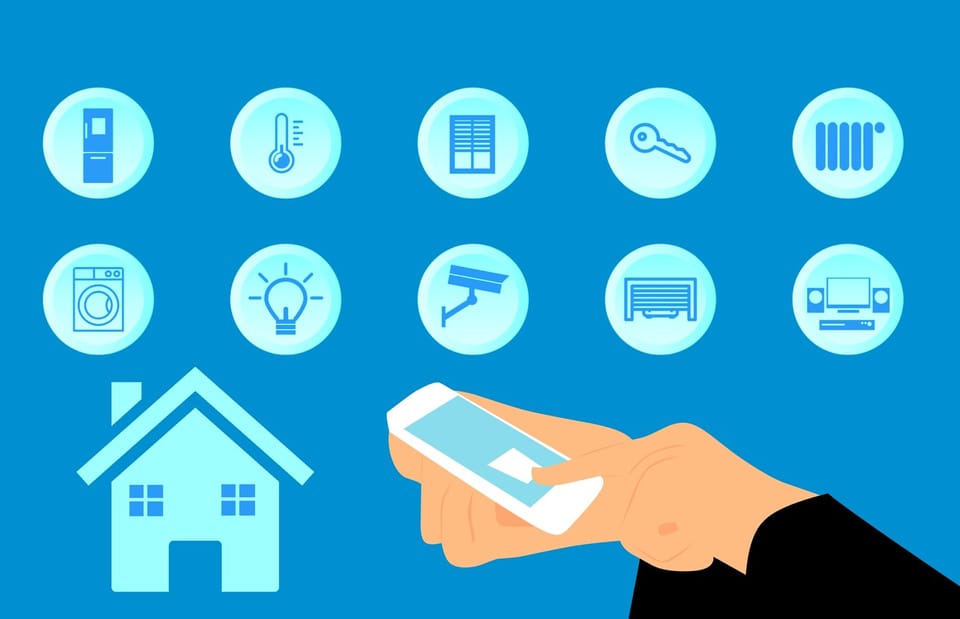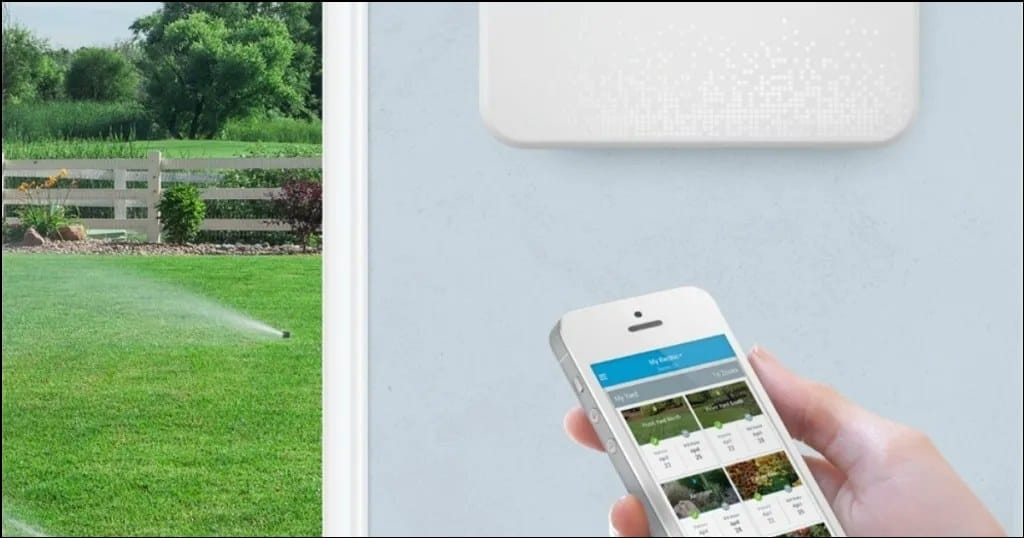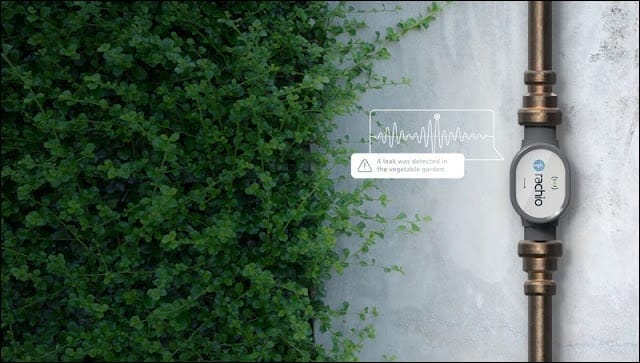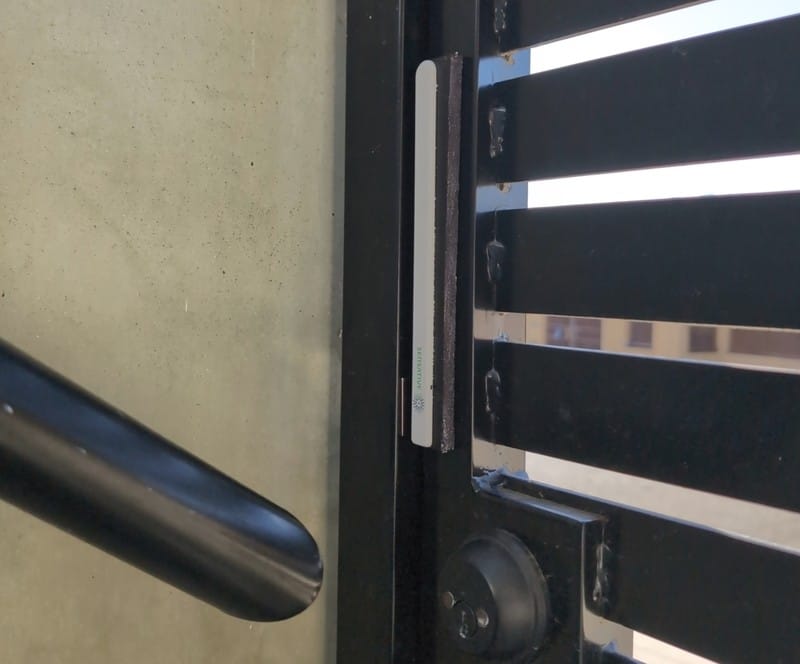The Smart Home in your Garden

Smart Homes that use automation to turn on your lights or unlock the front door with your phone or voice are increasingly popular. I have a Samsung SmartThings hub that automates the lighting, thermostat, and other devices in my house. I can check my outdoor nest cam to see if raccoons are tearing up my lawn and turn on my lawn sprinklers by command using a voice command via smart home gadgets.
The adoption of smart home technology is increasing in uptake. A recent study shows the number of smart households in the United States growing from 6.9% in 2015 to 22.3% in 2023. The smart home market is expected to continue to grow; projecting that the number of active U.S. households with home automation will reach 9.2 million by 2027.
All I see in the news about Smart Homes are articles on using this tech inside the house, not outside the house. While the interior is the most common use case for smart home devices, there are many applications for the exterior of your home. As a Garden designer, I have designed and installed many smart home devices in client gardens. Here are some examples of Smart Home use cases in the Garden:
Smart Irrigation Controllers

If you have an irrigation system like sprinklers or drip tubing, then you will likely have an irrigation controller. Irrigation controllers can be as simple as a countdown timer, or one with a small computer that runs everything according to a programmed schedule. These days, there are several options for irrigation controllers that can automatically determine the right schedule for watering your plants by using weather data, seasonal trends and can be adjusted or manually activated using your phone.
The two most common smart irrigation controllers are the Rachio and Orbit B-Hyve controllers. Both can be found in hardware stores all over North America. For a deeper dive on these, check out our blog post on irrigation controllers.
Both the B-Hyve and Rachio controllers can be integrated into your smart home system. For example, you can activate your sprinklers using voice commands through Amazon Alexa, Apple HomeKit or Google Home devices.
Flow detectors
Nobody wants to waste water in the garden. If you have a leak in your irrigation system, it could be leaking away water for months before you notice the problem. Flow detectors have been in use by groundskeepers of big commercial spaces for years. These large spaces will often require a laptop to keep track of the system and the flow detectors can send a signal to the main controller to alert the groundskeeper to the leaks.

Using smart home technology, flow detectors can now be used to alert us to leaks in the irrigation for residential applications. If a leak is detected, you could have your home assistant notify you to let you know there is a leak in the system that should be fixed. You can also use this information to let the smart irrigation controller automatically disable a watering schedule until the leak is fixed.
Lighting
One of the most common uses for smart home technology is lighting. Switching out a conventional light switch for a z-wave or matter enabled switch can convert your existing lights into smart lights that can then be controlled by your smart home system. You could have them turn on automatically in the morning, and off at night, or control them using voices commands.
If you have outdoor lights that are powered by internal switches (such as a patio light above sliding doors), these outdoor lights can be easily integrated into your smart home system. As of yet, I have not found any reliable smart home switches that are weatherproof and reliable for outdoor use.
You may also have outdoor lights that plug into an exterior socket directly. String lights are a common example of this type of garden lighting. For these lights, you can use weatherproof adapters to plug into outdoor sockets which will allow them to be automated via your smart home system. Jasco has produced reliable models for this use, although cheaper competitors can be found on Amazon these days.
Entry Sensors
Installing entry sensors is a great way to add automation to your Smart Home system. For example, a sensor on your front door can be used to turn on your lights when you come home in the evenings.
Using entry sensors can be useful in the garden too. If you have a gate, you can add a sensor to activate lights when the gate is opened at night, or notify you that a guest or unwanted visitor has arrived. Most sensors on the market are not weatherproof so you might need to MacGyver a cover for these. Sensative strips seem to be capable for outdoor use but they can be difficult to set up.

Another type of sensor can be useful if you have a garage that is detached from your house. Tilt sensors can be used to detect whether a garage door is open or closed. I have a tilt sensor on my garage door that I use to turn on my outdoor lights after the door is opened at night. These lights stay on for 15 minutes while I unload and walk over to the house from my garage.
There are many WiFi and smart-home-compatible garage door openers these days. These can also be used to create entry-triggered automation. If you don't need a new opener this is an expensive solution and the biggest U.S. supplier, Chamberlain, requires you to pay a subscription to use their opener for smart home automation.
Cameras
Probably the most common use of smart home devices in your garden is camera security. Ring cameras have exploded in popularity in recent years and are now the default doorbell device. Smart cameras like the Ring or Google Nest cameras can trigger automation based on the detection of people or cars.

I recently had a problem with raccoons coming in and digging up my lawn. I set up a nest outdoor cam overlooking the lawn and used it to trigger my sprinklers when the raccoons showed up. They soon disappeared. In doing so, I dealt with a pest problem humanely and with minimum effort.
If you like to grill outside but don't want to stand around outside, you could even use an outdoor camera to monitor your steak getting cooked, or at least make sure it doesn't get burned!
Automated Openers
Remote controlled gates and garage doors have been around for a long time. We can now find many smart-home compatible devices that can be triggered by old-school remotes and/or by other devices. Using GPS and WiFi sensors in your phone, you can have the gate or door automatically open when you arrive home.
In the section above on entry sensors, we can see that knowing the open/close state of these openers can also be used to trigger home automation.
Outdoor Entertainment
Many home assistant devices such as Amazon Echo or Google Nest tech also work as speakers for home entertainment. Some versions work outdoors, and using "follow me" features, you can have music play and seamlessly transition from the living room to the outdoor patio as you walk out of your home.

Smart speakers can also be used to make announcements. A favourite feature in my household is asking Alexa to announce "dinnertime!". This is announced across all devices including the one in the shed at the back of the garden.
The future is bright for Smart Gardens
Due to the weatherproofing required, there is a shortage of smart home solutions for the garden as compared the the inside of the house. So while options seem limited now, the future is bright when we consider the applications available for home automation in the household interior. There are temperature, UV, motion, vibration and humidity sensors that are readily available from numerous manufacturers.
Once we see better and more weatherproofed versions of these devices hitting the market, the garden can become just as automated as the house.



